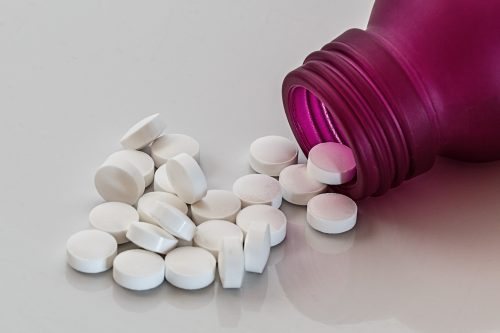A side effect is an adverse reaction to a drug or medicine. The term can also refer to an unintended consequence of a decision or action.
 Drug side effects range from minor to severe. Image: pixabay.
Drug side effects range from minor to severe. Image: pixabay.
In medicine, side effects are undesirable results of a drug or treatment. Clinical trials, for instance, evaluate the safety of new drugs and identify any side effects. Researchers also use the terms adverse events and adverse reactions to describe such results.
Drug side effects can range from minor to severe. Minor reactions include upset stomach and drowsiness. Severe reactions range from organ damage to life-threatening, although these are rare for approved drugs.
A side effect can also be “an unexpected result of a situation or course of action that happens as well as the result you were aiming for.” The following sentence offers an example of this definition:
“A reduction in consumer confidence could be a side effect of the new finance bill.”
Prescription drugs side effects
Some widely-used prescription drugs can have minor side effects. The following list – from drugwatch.com – gives some of the most common ones:
- Nausea
- Vomiting
- Diarrhea
- Stomach upset
- Fatigue
- Dizziness
- Drowsiness
- Palpitations, irregular heartbeat, and other heart issues
- Hives (urticaria or nettle rash)
- Rash
On their website, the consumer advocacy group also itemize common side effects for different drug types.
For instance, the common side effects of antibiotics include fever, diarrhea, nausea, rash, and yeast infection. For decongestants the most common adverse reactions are nasal irritation and nose bleed.
Side effects in drug research
Understanding the side effects of new drugs can be as important as knowing how effective they are. It yields insights into how the substance, and the disease it targets, affect the body. The knowledge can help to improve the drug and discover others.
Bringing a new drug to market is a lengthy and expensive process. Some estimates suggest it can take 10-15 years and cost an average of US$ 1.5 billion. The most expensive phase is when the drug enters clinical trials.
The most common reasons that drugs fail clinical trials are lack of efficacy and adverse side effects. Together, these account for the majority of failures.
Developing tools that can anticipate side effects of new drugs is a promising avenue for improving the effectiveness of drug discovery. Increasingly, computer models are assisting in this process.
Machine learning, for instance, is showing promise in accelerating drug discovery. It could help to identify potential adverse side effects before new drugs enter clinical trials.
Reporting adverse effects
Even after a drug receives regulatory approval, it is possible for unpredicted side effects to occur. There are several reasons for this, but the main one concerns the fact that clinical trials are not the same as the real world. They may exclude older individuals, or those with heart and other conditions that make them more vulnerable to side effects.
If you experience unexpected side effects from a drug, then tell your doctor. They may suggest that you stop taking the medication or offer an alternative. You can also report adverse events to the appropriate medicines authority in your country. In the United States, for instance, this body is MedWatch, the Food and Drug Administration (FDA) medical product safety reporting program.
Sometimes, adverse reports can lead to the withdrawal of a new drug pending further evaluation and trials.
The FDA’s Drug Information for Consumers page describes the drug approval process in the U.S. It also offers advice on how to buy and use drugs safely.
